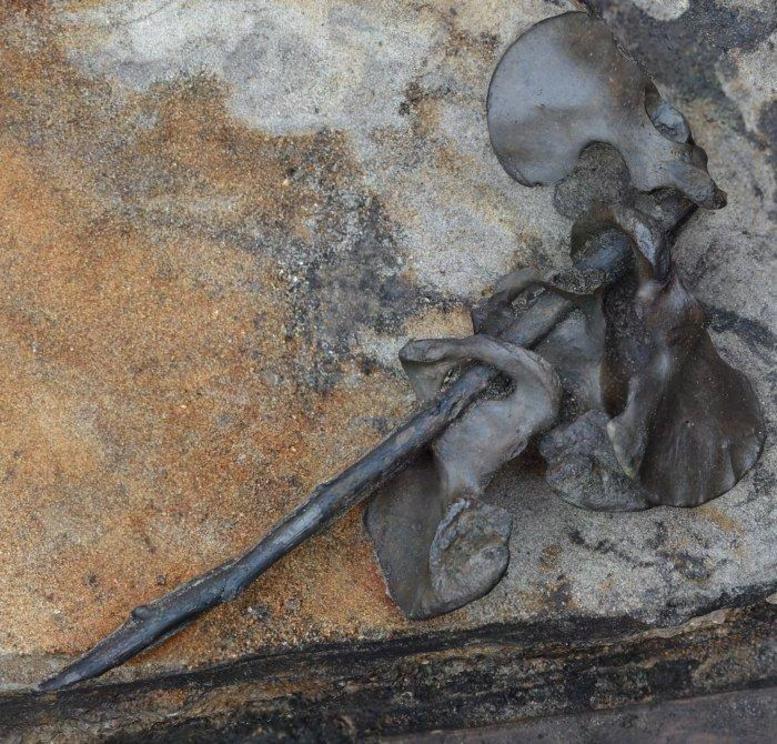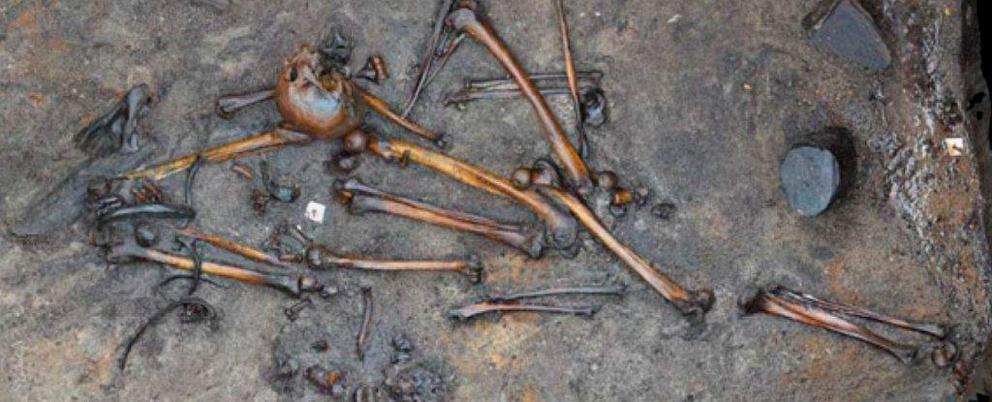Huge cache of human bones has revealed 'Barbarian' war rituals during the Roman empire
Archaeologists in Denmark have made a rare and extremely valuable find. Preserved in wetlands peat sediment, the remains of a fierce battle that raged in the first century CE, leaving nearly 2,100 bones to tell the tale millennia later - challenging what we know about barbarian warfare.
The Germanic tribes were ferocious warriors, instrumental in taking down the Roman Empire in the 5th century CE.
For hundreds of years before that, the tribes were a thorn in the Empire's side, and they were, by surviving Roman accounts, fearsome and intimidating foes. Their violent, ritualised behaviour after battles became something of a cliche.
Actual well-preserved human remains at battle sites, however, have been extremely scarce. And, while we shall remain forever grateful for the Roman scribes, there's only so much written accounts can tell us.
Before about 200 CE, we don't know what rituals the Germanic warriors performed, what they did with their fallen, how large their armies were or how they organised. That's why this find is so significant.
Between 2009 and 2014, archaeologists from Aarhus University and Moesgaard Museum excavated 2,095 bones and bone fragments from the Alken Enge wetlands in Denmark's Illerup River Valley. They were dispersed over an area of about 75 hectares, buried in lake and peat sediments.
Altogether, the bones have been attributed to at least 82 individuals, mostly young adult men. But based on the distribution of the bones, the population is estimated to be at least 380.
This number significantly exceeds the scale of any village in the area at the time, which suggests fighting groups were recruited from many villages, some far away - which would have required great organisational skills.
The number would also make the estimated army size four times larger than the army found in the Hjortspring Mose bog, which numbered just 80 - 100 people.
So how did the archaeologists know the bones were from a battle? Many of them showed signs of trauma, which hadn't healed - indicating that they were caused very close to death. Radiocarbon dating tied them to a single event; in addition, the remains of armaments such as swords, spears, shields, and knives were also found in the sediments.
Whom they fought with is unknown, but the trauma on the bodies is consistent with a conflict with another Germanic army, the researchers believe.
 (PNAS)
(PNAS)
But the battle didn't take place in the lake (where it actually happened is another unknown). The bones were probably moved there later - as evidenced by animal tooth marks, cut marks, and the placement of some of the bones, such as four pelvic bones threaded onto a stick.
"The animal tooth marks show that the bones were exposed to scavenging animals for a period of 0.5-1 years, during which time the human remains must have become at least partly skeletonised," the researchers wrote in their paper.
"The assemblages of bones and the four ossa coxae threaded on a stick [pictured above] demonstrate that the remains of the combatants were deliberately collected at a time when the bones were largely skeletonised."
The cut marks are consistent with severing ligaments that may have still held bones together. The researchers found hardly any intact skulls, but a lot of skull fragments - this could mean the skulls were selectively crushed.
And the fact that the dead were mainly young men suggests that the group deposited in the wetland area was carefully selected.
All these factors could suggest a ritual treatment of the bodies of the fallen, the researchers said. Or they could just be the result of a post-battle cleanup.
"Alken Enge provides unequivocal evidence that the people in Northern Germania had systematic and deliberate ways of clearing battlefields. Practices of corporeal dismemberment, modification, and bone assemblage composition suggest a ritual dimension in the treatment of the human corporeal remains," they wrote.
"Alken Enge provides a new, yet older, testament to the history of the militarization of the Northern Germanic societies and stresses the formative significance of the expansion phase of the Roman Empire at the turn of the era."
The research has been published in the journal PNAS.

